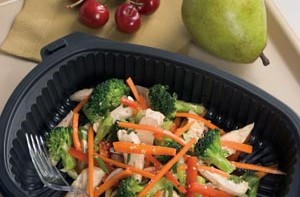healthy kids & families
Healthy Lunchboxes
 School lunches are an integral part of a child’s diet. Though some schools have made strides by offering fresh produce, many continue to offer highly processed, high sugar foods and sugar added drinks. As a healthy alternative, consider packing your child’s lunch.
School lunches are an integral part of a child’s diet. Though some schools have made strides by offering fresh produce, many continue to offer highly processed, high sugar foods and sugar added drinks. As a healthy alternative, consider packing your child’s lunch.
School Lunchbox Sandwich Ideas
Sandwiches don’t have to be plain and boring – put a little spice into your kid’s lunchbox! Sandwiches are a great way to encourage your child to eat healthy foods.
Apple and Cheese: This may sound like an unlikely combination – but give it a chance, it works! Grate an apple and some cheese into a bowl and mix them together. Squeeze a bit of lemon juice over the mixture to stop the apple turning brown. Add to your chosen bread/wrap. Apples are full of antioxidants which can help to protect against disease. They are also a good source of fiber, and are most healthy when left unpeeled.
Chicken with Peppers and Pesto: Slice up some leftover roast chicken and mix with a small teaspoon of ready-made green or red pesto. Chop up some thin slices of pepper (any colour). Add both to your chosen bread/wrap. Red peppers have three times more vitamin C than oranges. Vitamin C is really good for fighting infections and maintaining healthy bones, teeth and gums.
Banana and Peanut Butter: Peel a ripe banana and cut it either into circles or long slices. Spread some peanut butter over your bread of choice, add the chopped banana and you’re done. Bananas are a really good source of vitamin B6. This vitamin is important for the health of your immune system, nervous system and red blood cells.
Tuna and Lettuce: Drain a tin of tuna and flake it into a bowl with some mayonnaise and greek yoghurt. Mix it up. Spread it onto your chosen bread and top with some fresh lettuce. Tuna is both healthy and delicious. It is extremely high in omega-3.
Be Inventive: Some fillings taste good in almost any sandwich. These include vegetables like lettuce, onion, cucumber, peppers and tomatoes. Hummus, (a spread made from chickpeas) can be a great alternative to mayonnaise or butter and is really easy to make. Try different combinations of cheese, veg (fresh, grilled, pickled), eggs, potato salad, cold meats, peanut-butter, banana, hummus, mayonnaise, pesto, chutney & fish.
Lunchbox Pasta
A container of pasta salad can be a tasty and filling alternative to sandwiches. Try making it the evening before and leave it in the fridge – great for those busy mornings.
- Use wholemeal pasta as it contains more fiber than plain
- Use different shapes bows, wheels or twirls – let your child choose their favorite
- Add sweetcorn, cooked peas or grated carrots to cooked pasta – a colorful way to get more veg into your kid’s lunch
- To give your child some protein, add some cooked chicken (left over from a roast), flaked tuna or grated cheese
- Drizzle over some olive oil or stir in some pesto for a tasty healthy lunch
Get the kids involved in preparing their own pasta meal – they may come up with some interesting new recipes. Lastly don’t forget to pop a fork in to their bag to eat it with.
Remember Whole Grains
Taking into consideration the amount of bread we eat, it’s time we thought about using some alternatives to the regular white sliced.
What’s Wrong with White?
The refining process used to make white bread removes the natural bran and germ from the wheat grain. Removing the bran and germ increases shelf life but it also removes half the B vitamins, 90 percent of the vitamin E, and virtually all of the fiberfrom the wheat grain.
Brown is Better
Bread that is made using wholemeal or wholegrain flour contains the three key parts of the grain – the endosperm, germ and bran. These parts of the grain contain the vital fiber, nutrients, vitamins and minerals that can help to prevent disease. Numerous studies have shown that eating wholegrains can reduce the risk for cardiovascular disease, type 2 diabetes, digestive diseases, and certain cancers.
The recommended amounts of fiber to be eaten per day varies depending on age and gender and the source of the guidelines. The Harvard School of Public Health recommends that both adults and children get at least 20g of dietary fiber a day. One slice of wholemeal bread can contain about 3g of fiber, but check the labels to be sure. Don’t forget to get fiber from other sources such as fruit, veg, cereals and other products such as wholegrain pasta.
Things to Avoid: Salt & Sugar
Unfortunately, many of the breads we eat can be very high in salt. Be sure to compare salt content by checking labels before you buy. Try to avoid bread that is high in salt. Check the label – for every 100g of bread:
- 1.5 g of salt is a lot
- 0.1 g of salt is a little
While salt is one of the most important things to check for on bread, it also helps to look at sugar content. Avoid breads containing 10g (or more) of sugar per 100g.
Eat More Fruit and Veg: Lunchboxes
Eating more fruit & veg will help your child to reach and maintain a healthy weight – as well as helping prevent heart disease, stroke and certain cancers in later life. Did you know that a good way to achieve and maintain a healthy weight is to increase the amount of fruit & veg that you eat?
Fruit and veg are a natural addition to your child’s lunchbox – they’re an ideal healthy snack, they don’t make a mess, they don’t need much packaging and they’re cheap! There are lots of different varieties to choose from so you don’t have to pack the same thing every day.
Fruit
Most types of fruit are ideal fillers for lunchboxes, although you may want to avoid using ones that younger children will find difficult to peel on their own. It’s worth leaving the peel on where possible, as there are lots of fiber and other nutrients in the skin – don’t forget to wash fruit that is going to be eaten with the skin on. Some of our favorite lunchbox fruit includes:
Apples – try chopping into interesting shapes
Bananas – you can cut a small slit at the top if your kids have difficulty peeling them
Mandarins/Clementines/Satsumas – easier to peel than regular oranges
Grapes – one handful counts as a portion
Pears – if your child only eats apples, try widening their horizons with a pear!
Berries – strawberries, blackberries, raspberries, blueberries, cherries, buy frozen to save money
Kiwis – slice in half and your kids can eat them the same way as a boiled egg
Fruit Salad
If you’ve got a bit of time, you can chop fruit up and make a little fruit salad to put in a small tupperware pot. Shake it up with some lemon juice to stop the fruit from going brown.
Fruity Yoghurt
Adding chopped fruit to natural yoghurt is also a great way to jazz up both fruit and yoghurt. You can even use frozen fruit, and the beauty of this is that the frozen fruit will keep the yoghurt cool! Add a drop of honey if your kids find the yoghurt a bit sour. Your homemade mix will still be much lower in sugar (and higher in fruit!) than most of the “fruit” yoghurts you can buy in the shops.
Smoothies
If you’re getting lunches ready for more than one child, smoothies can be well worth the effort of throwing a few bits of fruit into a blender. You can prepare it the night before and store the mixture in the fridge. Pour the mix into leak-proof flasks or bottles the next morning before the school run.
Vegetables
Raw vegetables can be just as tasty and versatile as fruit, and they are also great additions for lunchboxes. Some of the best kinds of veg to be eaten raw include:
Tomatoes
Carrots
Cucumbers
Peppers
Celery
Radishes
Salad leaves (e.g. lettuce, rocket, mizuna, baby spinach, beetroot leaves)
Raw Veggie Sticks
Chop raw vegetables into matchstick sized pieces and serve them as they are. Carrots, peppers and celery are particularly good for this. As an added extra, include a pot of hummus that kids will enjoy dipping into.
Salad Ribbons
Try making a mini-salad using carrot ribbons, tomatoes and some lettuce leaves. The more colour, the better! You can make vegetable ribbons by using a peeler on things like cucumbers, carrots and courgettes. They’re easy to eat and add a bit of novelty.
Don’t forget, fruit and veg can also be included in lunchboxes as parts of sandwich fillings and cracker toppings.
Get the Kids Involved
If you get the kids involved in the shopping, chopping and selecting fruits & veggies, they’ll be much more likely to eat them! Don’t worry if the lunchbox comes home with uneaten fruit/veg – just persevere. You’re aiming to make fruits and veggies normal for your kids, so don’t worry if they don’t automatically gobble them up – especially if they’re not used to them. Take a long term approach – just keep packing fruit & veg and offering gentle encouragement. If there are leftovers brought home, no worries- eat them together.
Source: Parents for Health

